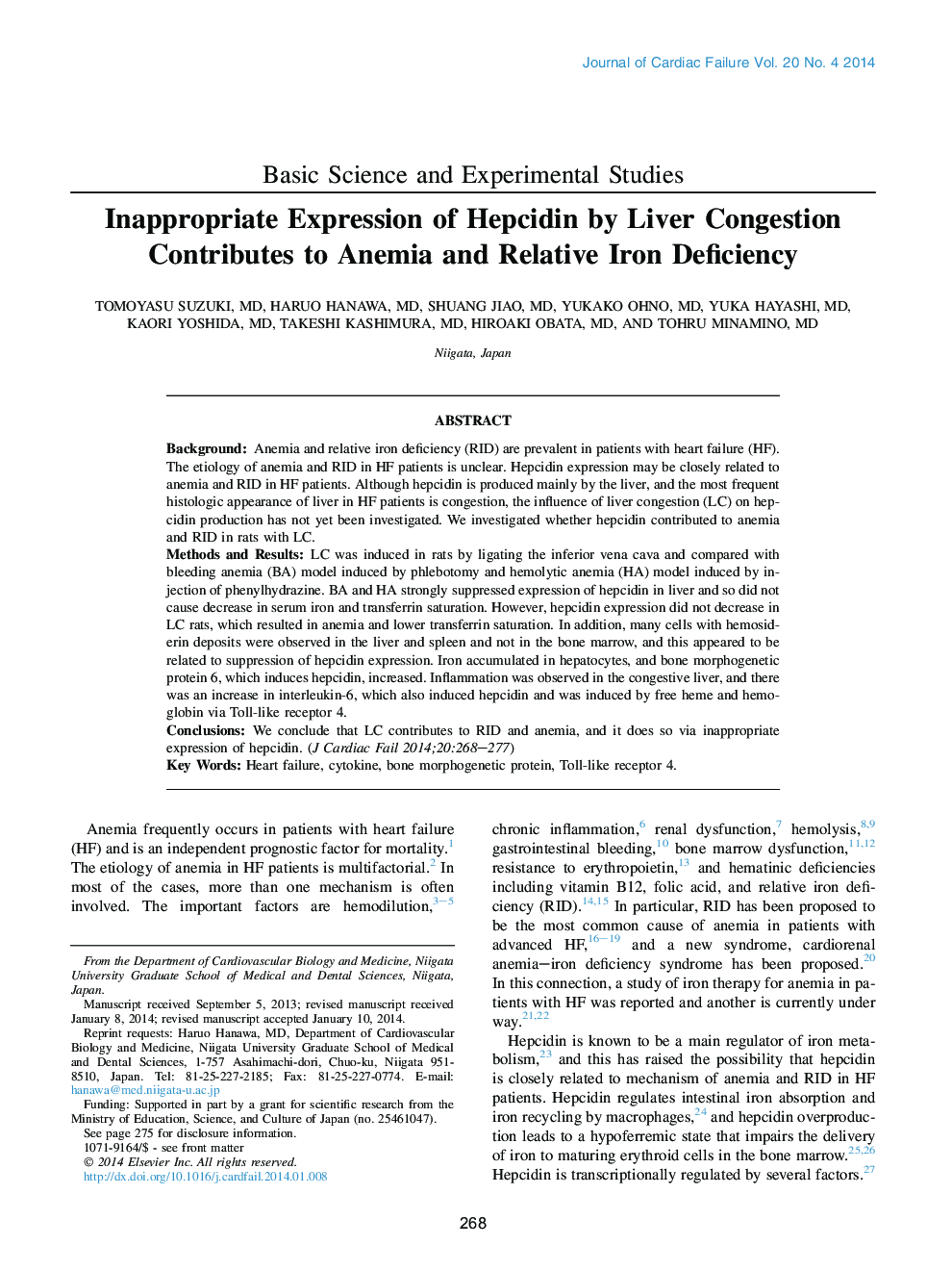| Article ID | Journal | Published Year | Pages | File Type |
|---|---|---|---|---|
| 2959493 | Journal of Cardiac Failure | 2014 | 10 Pages |
BackgroundAnemia and relative iron deficiency (RID) are prevalent in patients with heart failure (HF). The etiology of anemia and RID in HF patients is unclear. Hepcidin expression may be closely related to anemia and RID in HF patients. Although hepcidin is produced mainly by the liver, and the most frequent histologic appearance of liver in HF patients is congestion, the influence of liver congestion (LC) on hepcidin production has not yet been investigated. We investigated whether hepcidin contributed to anemia and RID in rats with LC.Methods and ResultsLC was induced in rats by ligating the inferior vena cava and compared with bleeding anemia (BA) model induced by phlebotomy and hemolytic anemia (HA) model induced by injection of phenylhydrazine. BA and HA strongly suppressed expression of hepcidin in liver and so did not cause decrease in serum iron and transferrin saturation. However, hepcidin expression did not decrease in LC rats, which resulted in anemia and lower transferrin saturation. In addition, many cells with hemosiderin deposits were observed in the liver and spleen and not in the bone marrow, and this appeared to be related to suppression of hepcidin expression. Iron accumulated in hepatocytes, and bone morphogenetic protein 6, which induces hepcidin, increased. Inflammation was observed in the congestive liver, and there was an increase in interleukin-6, which also induced hepcidin and was induced by free heme and hemoglobin via Toll-like receptor 4.ConclusionsWe conclude that LC contributes to RID and anemia, and it does so via inappropriate expression of hepcidin.
